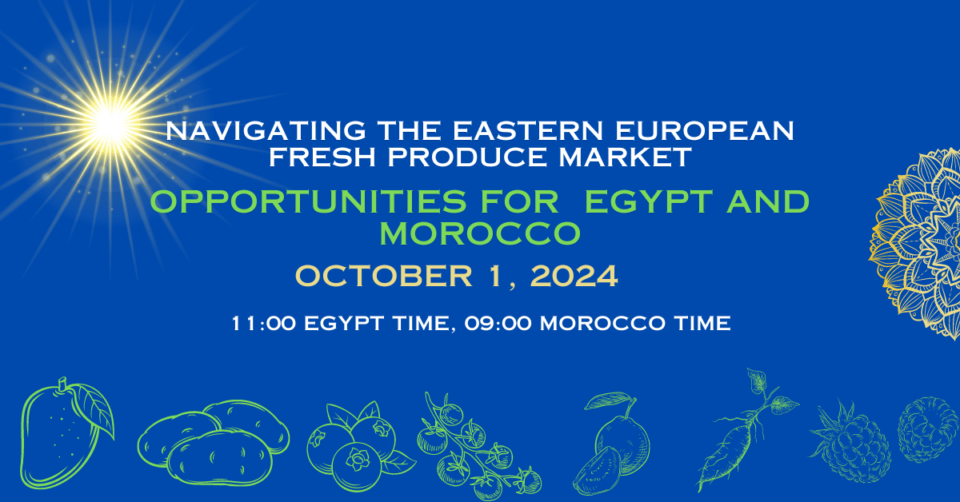Attention! The video-recording of the training is available on our Youtube channel via this link: https://youtu.be/h7R3gYIPx3M
Two prominent Polish fresh produce importers are to join the online training “Navigating the Eastern European fresh produce market. Opportunities for Egypt and Morocco” and share their perspectives on the export potential of Egyptian and Moroccan produce in Eastern Europe.
The training will commence on October 1st, 11:00 am (Egypt Time) or 09:00 am (Morocco Time) and involve the speeches both from direct importers and market analysts:
- Alexander Sinicki, AS Import-Export, a trader with the office in Perpignan and extensive experience in import from Morocco, will share his own view on Moroccan fruit and vegetables’ potential in Poland
- Dariusz Zawadka, Fruland, Poland, a trader supplying the Polish market with produce from Egypt, Turkey, Morocco, South Africa, etc., will discuss the Egyptian fresh produce export perspectives in the Polish market
- Yevhen Kuzin, FAO International Consultant, Horticulture Market Analyst, will present the fruit and vegetable market niches for Egyptian and Moroccan exporters in Eastern Europe
- Andriy Yarmak, FAO Economist, will lead the training, cover the Eastern European fresh produce market dynamics, peculiarities, and specifics, discuss key approaches to export diversification, and present the opportunities to join the trade mission to Warsaw in November
We look forward to seeing you at the training! Registration form is available here
Why Eastern Europe?
- Large Consumer Base. With over 111 million consumers sharing similar habits and preferences, Eastern Europe forms a substantial trade zone, either within the EU or through the FTA with Ukraine.
- Distinct Consumer Profile. The region boasts a unique consumer demographic within Europe, characterized by mature individuals who are open to experimentation and eager to embrace innovations, new tastes, flavors, and experiences.
- Robust Economic Growth. Eastern Europe often outpaces advanced EU markets in economic growth. For instance, Poland and Romania are expected to achieve real GDP growth rates of 3.5-3.6% in 2025, compared to the projected 1.5% for older EU member states.
- Strategic Trade Location. Positioned to facilitate trade between East and West, North and South, the region benefits from an almost free trade zone, well-developed road infrastructure, strong commercial connections, and extensive airport logistics.
- Growing Import Market. There has been a 28% increase in spending on fruit and vegetable imports in Eastern Europe from 2019 to 2023, now totaling $10 billion. Eastern Europe is among global import leaders in citrus, grape, watermelon, and other segments.
- Reverse Trade Opportunities. The region boasts significant opportunities for establishing bilateral and multilateral trade routes, including reverse imports of apples, pears, nuts, and various other categories.
The training is organized by FAO/EBRD Project: Food Security Package SEMED – Diversifying and adding value to export markets.
The use of the site materials is free if there is a direct and open for search engines hyperlink to a specific publication of the East-Fruit.com website.




